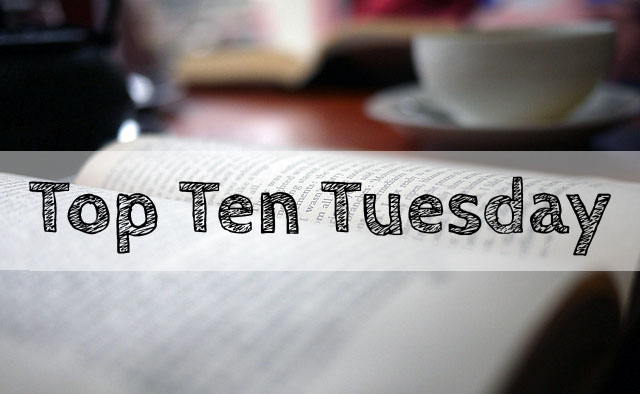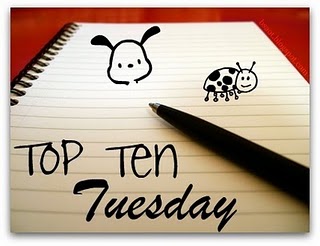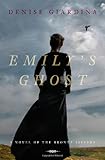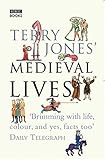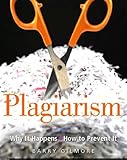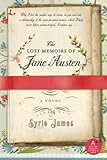I didn’t have a chance to post my Top Ten Tuesday response yesterday. I love the topic for this week: Top Ten Favorite Book Covers of Books I’ve Read.
Despite the adage not to judge a book by its cover, we all do it, and we all pick up books because the cover entrances us. We have also probably eschewed perfectly good books because of unattractive covers. If we didn’t pay attention to covers, neither would publishers, who spend a lot of money (I am assuming) on graphic designers.
In order to write this post, I scrolled through my Read pile on Goodreads. Here are my favorite covers.
[amazon_image id=”0743273567″ link=”true” target=”_blank” size=”medium” ]The Great Gatsby[/amazon_image] [amazon_image id=”1594746036″ link=”true” target=”_blank” size=”medium” ]Miss Peregrine’s Home for Peculiar Children[/amazon_image] [amazon_image id=”0345802624″ link=”true” target=”_blank” size=”medium” ]The Night Circus[/amazon_image] [amazon_image id=”B005UVW8NQ” link=”true” target=”_blank” size=”medium” ]The Map of True Places[/amazon_image] [amazon_image id=”0393338487″ link=”true” target=”_blank” size=”medium” ]Emily’s Ghost[/amazon_image] [amazon_image id=”0143105434″ link=”true” target=”_blank” size=”medium” ]Wuthering Heights[/amazon_image] [amazon_image id=”0143106155″ link=”true” target=”_blank” size=”medium” ]Jane Eyre[/amazon_image] [amazon_image id=”0060731338″ link=”true” target=”_blank” size=”medium” ]Freakonomics[/amazon_image] [amazon_image id=”B005EP2310″ link=”true” target=”_blank” size=”medium” ]Ahab’s Wife[/amazon_image] [amazon_image id=”0679751521″ link=”true” target=”_blank” size=”medium” ]Midnight in the Garden of Good and Evil[/amazon_image]
I could have chosen a lot of covers for this post, and indeed, I had trouble narrowing it to ten. There are quite a few books with arresting covers that have caught my eye. But I narrowed it down to these ten. I think the Cugat cover of [amazon_link id=”0743273567″ target=”_blank” ]The Great Gatsby[/amazon_link] is one of the most iconic and beautiful book covers of all time. Even Fitzgerald, upon seeing it (and fearing that his publisher would give it to another writer), said, “don’t give anyone that jacket you’re saving for me. I’ve written it into the book.”
The cover of [amazon_link id=”1594746036″ target=”_blank” ]Miss Peregrine’s Home for Peculiar Children[/amazon_link] is an arresting black and white photograph of a levitating girl. Ransom Riggs’s book was famously inspired by a package of odd photographs he purchased, and he created his characters from those photographs. The girl on the cover is the little girl who floats unless she is tied to something. I love her ancient little face. She looks like little old woman. The font is also part of what makes this cover design appealing.
I didn’t much care for the novel [amazon_link id=”0345802624″ target=”_blank” ]The Night Circus[/amazon_link], but the cover is quite striking in black, white, and red. The artwork reminds me of paper doll cutouts.
The hardcover version of Brunonia Barry’s novel [amazon_link id=”B005UVW8NQ” target=”_blank” ]The Map of True Places[/amazon_link] caught my eye because of the gorgeous blue of the sky and water and the celestial map markings. I was lucky to receive two signed copies of this book when I won a sweepstakes connected to this novel. Obviously, that isn’t why I love the cover, but I surely did fall in love with Salem and with Massachusetts, and this book was a large part of that.
I think what I like about the cover of [amazon_link id=”0393338487″ target=”_blank” ]Emily’s Ghost[/amazon_link] is the juxtaposition of the striping on the bottom where the title appears with the gorgeous picture of the woman looking over the bare moors.
I think Ruben Toledo’s covers of the Penguin classics are all brilliant, but my two favorites are his covers of [amazon_link id=”0143105434″ target=”_blank” ]Wuthering Heights[/amazon_link] and [amazon_link id=”0143106155″ target=”_blank” ]Jane Eyre[/amazon_link]. I love the drawings of Catherine and Heathcliff on the first, and the excellent blue creepiness of the house and sweet little Jane on the second. The cartoonish nature of the drawings is fun and appealing. I think as a student, I might be more inclined to pick up the classics illustrated by Toledo as opposed to those versions with old paintings of women on the covers. You know what I mean.
The cover of [amazon_link id=”0060731338″ target=”_blank” ]Freakonomics[/amazon_link] intrigues me because it doesn’t meet expectations. The apple is cut open to reveal and orange inside. Not only that, but the apple is green, and for some reason, this cover wouldn’t work if the apple were any other color. I can’t stop looking at it, for some reason, and I definitely wanted to read it because of the cover.
[amazon_link id=”B005EP2310″ target=”_blank” ]Ahab’s Wife[/amazon_link] is one of my all-time favorites. I just love the wrecked ship and the way the woman on the cover is looking at it. You can tell she is remembering her story. “Captain Ahab was neither my first husband nor my last.” See? Now don’t you want to read it? It’s nearly as good an opener as “Call me Ishmael.” It’s a stunning book, and I love the stark beauty of the cover.
The last book I chose the famous image of the Bird Girl statue from John Berendt’s [amazon_link id=”0679751521″ target=”_blank” ]Midnight in the Garden of Good and Evil[/amazon_link]. It is an arresting image in green, and the statue became such a draw for tourists in Savannah that the city moved it out of the graveyard, where it obviously was located when this photograph was taken, to a museum. It is not quite the same, seeing it there. The Bird Girl belongs in this graveyard under the large trees weeping Spanish moss. I hope they move her back there someday.
What are your favorite book covers?
